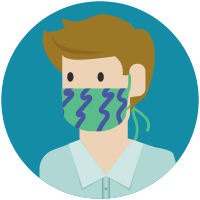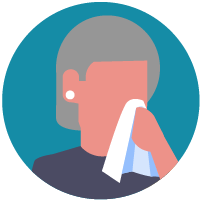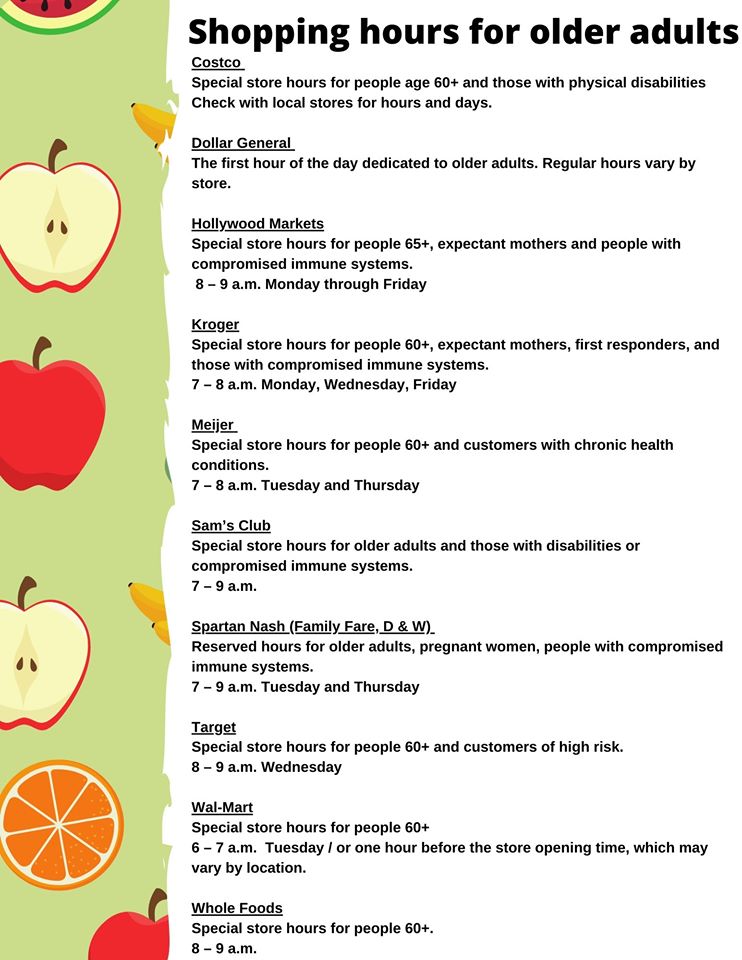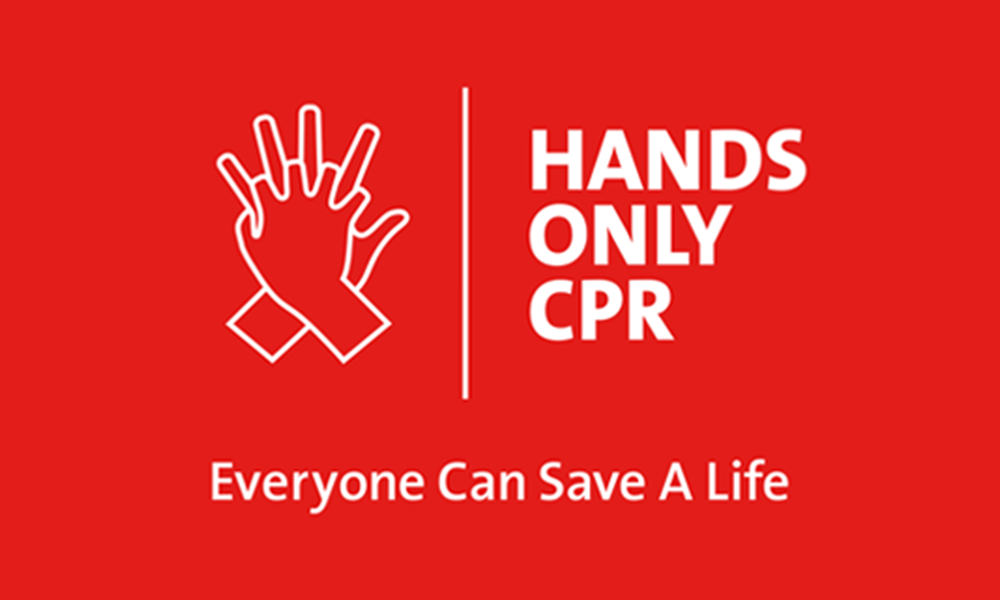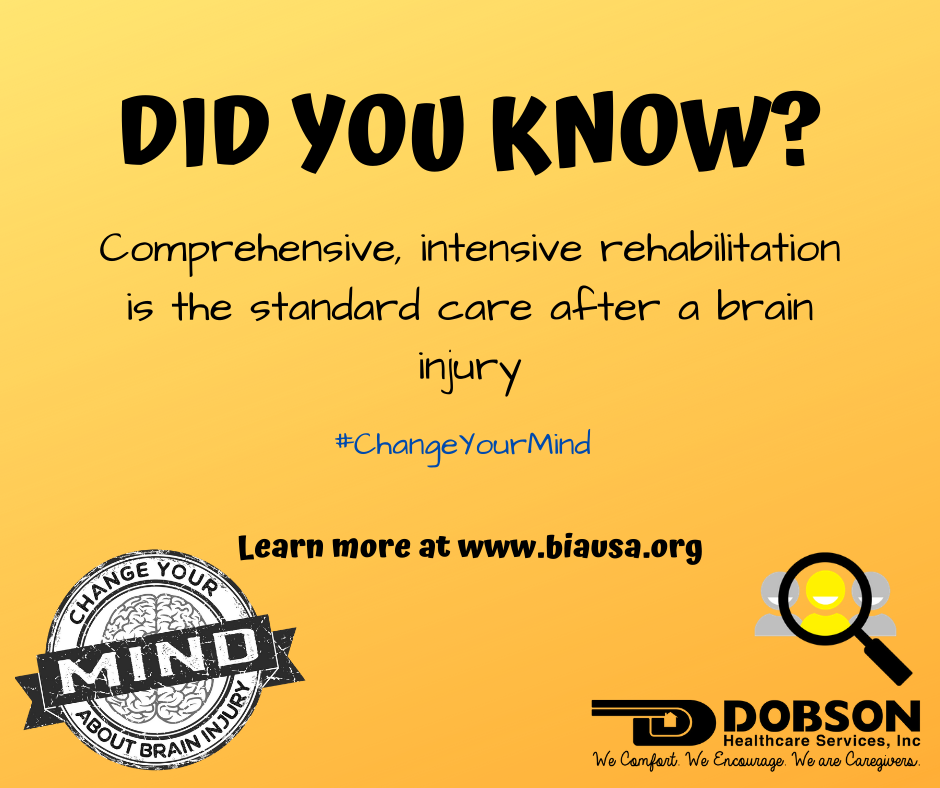It can be hard to tell if you or a loved one has Parkinson’s disease (PD).
Below are 10 signs that you might have the disease. No single one of these signs means that you should worry, but if you have more than one sign you should consider making an appointment to talk to your doctor.
Tremor
 Have you noticed a slight shaking or tremor in your finger, thumb, hand or chin? A tremor while at rest is a common early sign of Parkinson’s disease.
Have you noticed a slight shaking or tremor in your finger, thumb, hand or chin? A tremor while at rest is a common early sign of Parkinson’s disease.
What is normal?
Shaking can be normal after lots of exercise, if you are stressed or if you have been injured. Shaking could also be caused by a medicine you take.
Small Handwriting
 Has your handwriting gotten much smaller than it was in the past? You may notice the way you write words on a page has changed, such as letter sizes are smaller and the words are crowded together. A change in handwriting may be a sign of Parkinson’s disease called micrographia.
Has your handwriting gotten much smaller than it was in the past? You may notice the way you write words on a page has changed, such as letter sizes are smaller and the words are crowded together. A change in handwriting may be a sign of Parkinson’s disease called micrographia.
What is normal?
Sometimes writing can change as you get older, if you have stiff hands or fingers or poor vision.
Loss of Smell
 Have you noticed you no longer smell certain foods very well? If you seem to have more trouble smelling foods like bananas, dill pickles or licorice, you should ask your doctor about Parkinson’s.
Have you noticed you no longer smell certain foods very well? If you seem to have more trouble smelling foods like bananas, dill pickles or licorice, you should ask your doctor about Parkinson’s.
What is normal?
Your sense of smell can be changed by a cold, flu or a stuffy nose, but it should come back when you are better.
Trouble Sleeping
 Do you thrash around in bed or act out dreams when you are deeply asleep? Sometimes, your spouse will notice or will want to move to another bed. Sudden movements during sleep may be a sign of Parkinson’s disease.
Do you thrash around in bed or act out dreams when you are deeply asleep? Sometimes, your spouse will notice or will want to move to another bed. Sudden movements during sleep may be a sign of Parkinson’s disease.
What is normal?
It is normal for everyone to have a night when they ‘toss and turn’ instead of sleeping. Similarly, quick jerks of the body when initiation sleep or when in lighter sleep are common and often normal.
Trouble Moving or Walking
 Do you feel stiff in your body, arms or legs? Have others noticed that your arms don’t swing like they used to when you walk? Sometimes stiffness goes away as you move. If it does not, it can be a sign of Parkinson’s disease. An early sign might be stiffness or pain in your shoulder or hips. People sometimes say their feet seem “stuck to the floor.”
Do you feel stiff in your body, arms or legs? Have others noticed that your arms don’t swing like they used to when you walk? Sometimes stiffness goes away as you move. If it does not, it can be a sign of Parkinson’s disease. An early sign might be stiffness or pain in your shoulder or hips. People sometimes say their feet seem “stuck to the floor.”
What is normal?
If you have injured your arm or shoulder, you may not be able to use it as well until it is healed, or another illness like arthritis might cause the same symptom.
Constipation
 Do you have trouble moving your bowels without straining every day? Straining to move your bowels can be an early sign of Parkinson’s disease and you should talk to your doctor.
Do you have trouble moving your bowels without straining every day? Straining to move your bowels can be an early sign of Parkinson’s disease and you should talk to your doctor.
What is normal?
If you do not have enough water or fiber in your diet, it can cause problems in the bathroom. Also, some medicines, especially those used for pain, will cause constipation. If there is no other reason such as diet or medicine that would cause you to have trouble moving your bowels, you should speak with your doctor.
 A Soft or Low Voice
A Soft or Low Voice
Have other people told you that your voice is very soft or that you sound hoarse? If there has been a change in your voice you should see your doctor about whether it could be Parkinson’s disease. Sometimes you might think other people are losing their hearing, when really you are speaking more softly.
What is normal?
A chest cold or other virus can cause your voice to sound different, but you should go back to sounding the same when you get over your cough or cold.
Masked Face
 Have you been told that you have a serious, depressed or mad look on your face, even when you are not in a bad mood? This is often called facial masking. If so, you should ask your doctor about Parkinson’s disease.
Have you been told that you have a serious, depressed or mad look on your face, even when you are not in a bad mood? This is often called facial masking. If so, you should ask your doctor about Parkinson’s disease.
What is normal?
Some medicines can cause you to have the same type of serious or staring look, but you would go back to the way you were after you stopped the medication.
Dizziness or Fainting
 Do you notice that you often feel dizzy when you stand up out of a chair? Feeling dizzy or fainting can be a sign of low blood pressure and can be linked to Parkinson’s disease (PD).
Do you notice that you often feel dizzy when you stand up out of a chair? Feeling dizzy or fainting can be a sign of low blood pressure and can be linked to Parkinson’s disease (PD).
What is normal?
Everyone has had a time when they stood up and felt dizzy, but if it happens on a regular basis you should see your doctor.
Stooping or Hunching Over
 Are you not standing up as straight as you used to? If you or your family or friends notice that you seem to be stooping, leaning or slouching when you stand, it could be a sign of Parkinson’s disease (PD).
Are you not standing up as straight as you used to? If you or your family or friends notice that you seem to be stooping, leaning or slouching when you stand, it could be a sign of Parkinson’s disease (PD).
What is normal?
If you have pain from an injury or if you are sick, it might cause you to stand crookedly. Also, a problem with your bones can make you hunch over.
What can you do if you have PD?
- Work with your doctor to create a plan to stay healthy. This might include the following:
- A referral to a neurologist, a doctor who specializes in the brain
- Care from an occupational therapist, physical therapist or speech therapist
- Meeting with a medical social worker to talk about how Parkinson’s will affect your life
- Start a regular exercise program to delay further symptoms.
- Talk with family and friends who can provide you with the support you need.
Source: Parkinsons.org
Have a blessed Easter. May the risen Lord bless you abundantly and bring lots of happiness to you and your family.
– Jami Dobson RN, BSN
Who Has Parkinson’s?
- Nearly one million will be living with Parkinson’s disease (PD) in the U.S. by 2020, which is more than the combined number of people diagnosed with multiple sclerosis, muscular dystrophy and Lou Gehrig’s disease (or Amyotrophic Lateral Sclerosis)
- Approximately 60,000 Americans are diagnosed with PD each year.
- More than 10 million people worldwide are living with PD.
- Incidence of Parkinson’s disease increases with age, but an estimated four percent of people with PD are diagnosed before age 50.
- Men are 1.5 times more likely to have Parkinson’s disease than women.
Estimated Healthcare Costs Related to PD in the U.S.
The combined direct and indirect cost of Parkinson’s, including treatment, social security payments and lost income, is estimated to be nearly $52 billion per year in the United States alone.
Medications alone cost an average of $2,500 a year and therapeutic surgery can cost up to $100,000 per person.
Source: Parkinsons.org
April is Parkinsons Awareness Month.
Every day with Parkinson’s disease (PD) can feel different. Having a plan in place can better prepare us for the challenges Parkinson’s may present. April is Parkinson’s Awareness Month. This year, we want to encourage everyone in the PD community to take actionable steps to #Plan4PD and share ways that help improve your everyday life with Parkinson’s.
Source: Parkinson.Org
Parkinson’s disease (PD) is a neurodegenerative disorder that affects predominately dopamine-producing (“dopaminergic”) neurons in a specific area of the brain called substantia nigra.
Symptoms generally develop slowly over years. The progression of symptoms is often a bit different from one person to another due to the diversity of the disease. People with PD may experience:
- Tremor, mainly at rest and described as pill rolling tremor in hands. Other forms of tremor are possible
- Bradykinesia
- Limb rigidity
- Gait and balance problems
The cause remains largely unknown. Although there is no cure, treatment options vary and include medications and surgery. While Parkinson’s itself is not fatal, disease complications can be serious. The Centers for Disease Control and Prevention (CDC) rated complications from PD as the 14th cause of death in the United States.
The first step to living well with Parkinson’s disease is to understand the disease and the progression:
It is possible to have a good to great quality of life with PD. Working with your doctor and following recommended therapies are essential in successfully treating symptoms by using dopaminergic medications. People with PD need this medication because they have low levels or are missing dopamine in the brain, mainly due to impairment of neurons in the substantia nigra.
It is important to understand that people with PD first start experiencing symptoms later in the course of the disease because a significant amount of the substantia nigra neurons have already been lost or impaired. Lewy bodies (accumulation of abnormal alpha-synuclein) are found in substantia nigra neurons of PD patients.
Scientists are exploring ways to identify biomarkers for PD that can lead to earlier diagnosis and more tailored treatments to slow down the disease process. Currently, all therapies used for PD improve symptoms without slowing or halting the disease progression.
In addition to movement-related (“motor”) symptoms, Parkinson’s symptoms may be unrelated to movement (“non-motor”).People with PD are often more impacted by their non-motor symptoms than motor symptoms. Examples of non-motor symptoms include: apathy, depression, constipation, sleep behavior disorders, loss of sense of smell and cognitive impairment.
In idiopathic Parkinson’s disease, progression tends to be slow and variable. Doctors often use the Hoehn and Yahr scale to gauge the progression of the disease over the years. The scale was originally implemented in 1967 and it included stages zero to five, where zero is no signs of Parkinson’s and five is advanced PD. It was later changed to become the modified Hoehn and Yahr scale.
Page reviewed by Dr. Ahmad Elkouzi, Movement Disorders Fellow at the University of Florida, a Parkinson’s Foundation Center of Excellence.
Stores throughout Michigan are offering special shopping hours for older adults in response to COVID-19. We applaud this move! Here is a current list of special shopping hours at stores with large footprints in Michigan.
A friendly reminder…Doing CPR on a client, family member, or stranger could disperse the virus. The American Red Cross and the American Heart Association recommend that if you find yourself in a CPR situation, that compression, or hands on only resuscitation be done.
If possible, the mouth and nose of the victim should be covered with a mask of some kind, or a light cloth to help prevent airborne circulation. Under no circumstances should one use a resuscitation mask..
Please review the following steps for hands only CPR.
Before Giving CPR
Check the scene and the person. Check to make sure the scene is safe, tap the person on the shoulder to see if they’re OK, and look for signs of rhythmic, normal breathing.
Call 911 for assistance. If there’s no response from the victim when asked if he or she is OK, call 911, or ask a bystander to call for help.
Begin compressions. If the person is unresponsive, perform hands-only CPR.
How to Perform Hands-Only CPR
Kneel beside the person who needs help.
Place the heel of one hand on the center of the chest.
Place the heel of the other hand on top of the first hand, then lace your fingers together.
Position your body so that your shoulders are directly over your hands, and keep your arms straight.
Push hard, push fast. Use your body weight to help you administer compressions that are at least 2 inches deep and delivered at a rate of at least 100 compressions per minute. (Just be sure to let chest rise completely between compressions.)
Keep pushing. Continue hands-only CPR until you see obvious signs of life, like breathing, another trained responder or EMS professional can take over, you’re too exhausted to continue, an AED becomes available, or the scene becomes unsafe.
The Michigan.gov site is a great resource on the most up to date information on COVID-19. We continue to use this site to keep our clients and staff supplied with the most up to date information.
If you still have questions they have a COVID-19 Hotline:
1-888-535-6136
Daily 8a – 5p

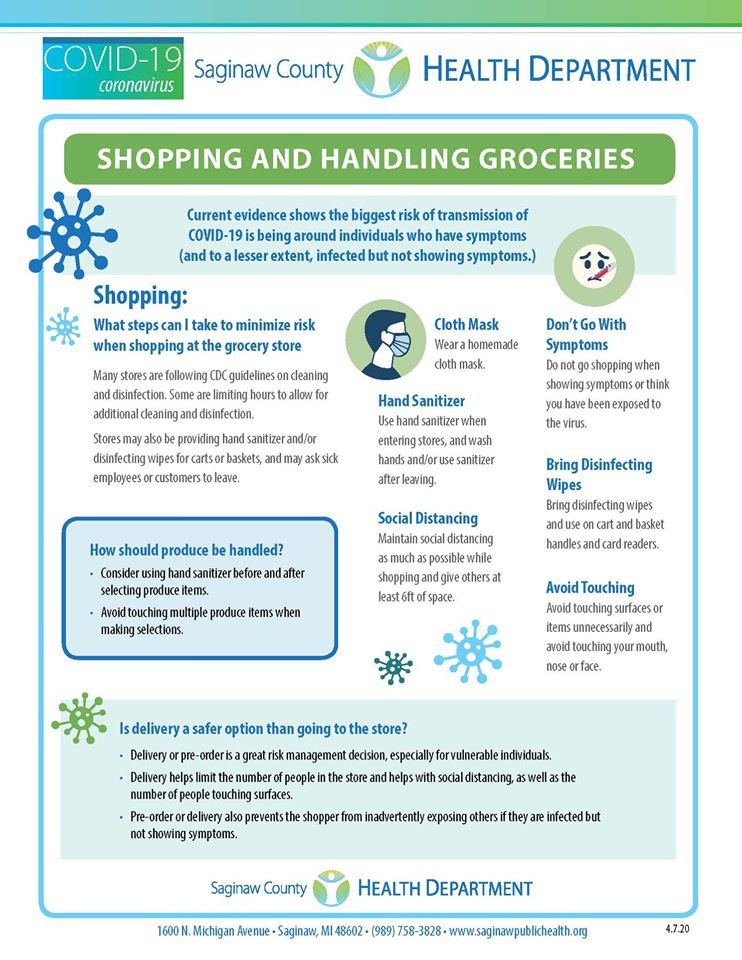
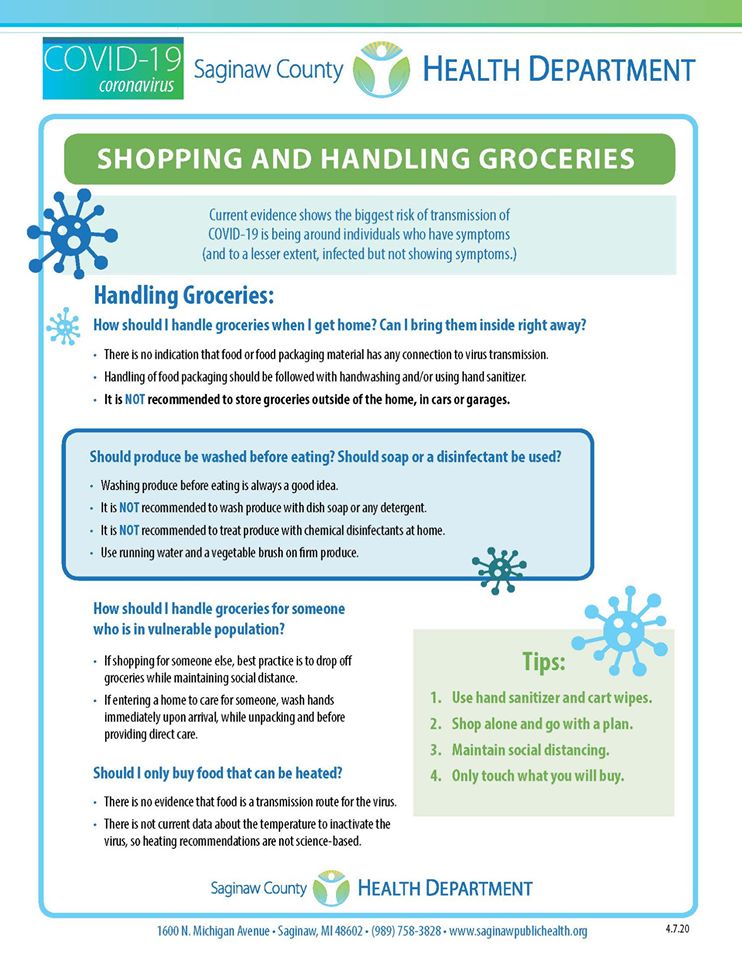 Source: Saginaw County Health Department
Source: Saginaw County Health Department



